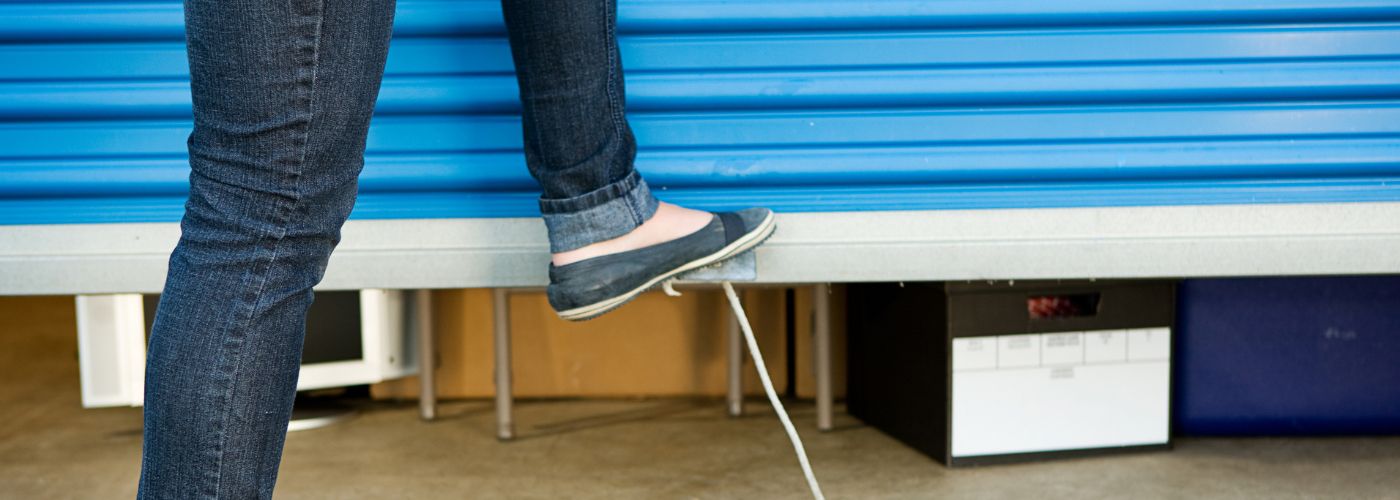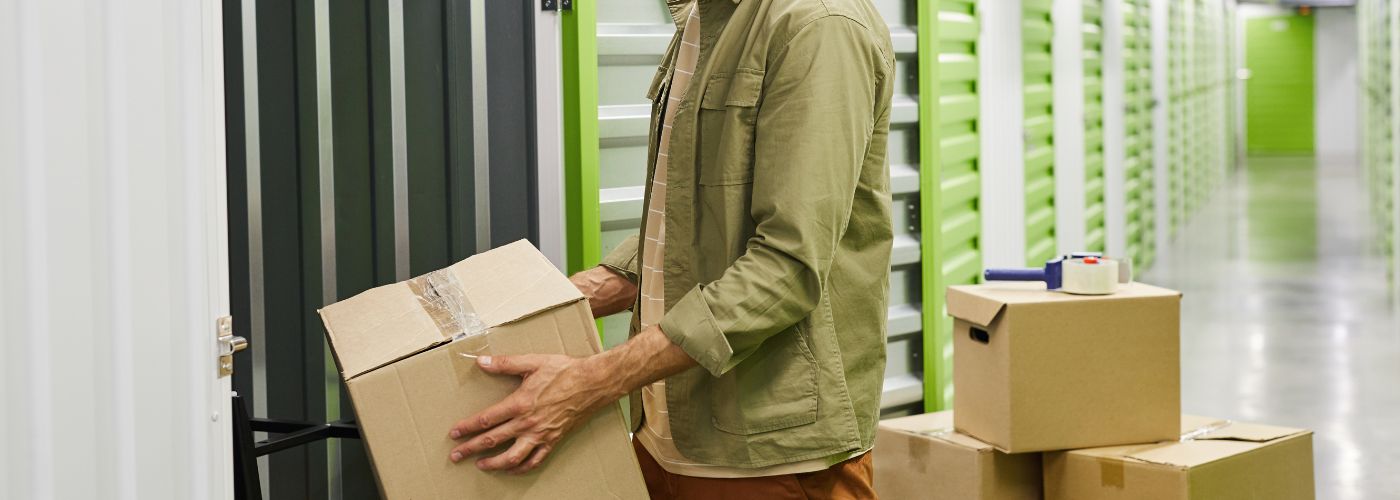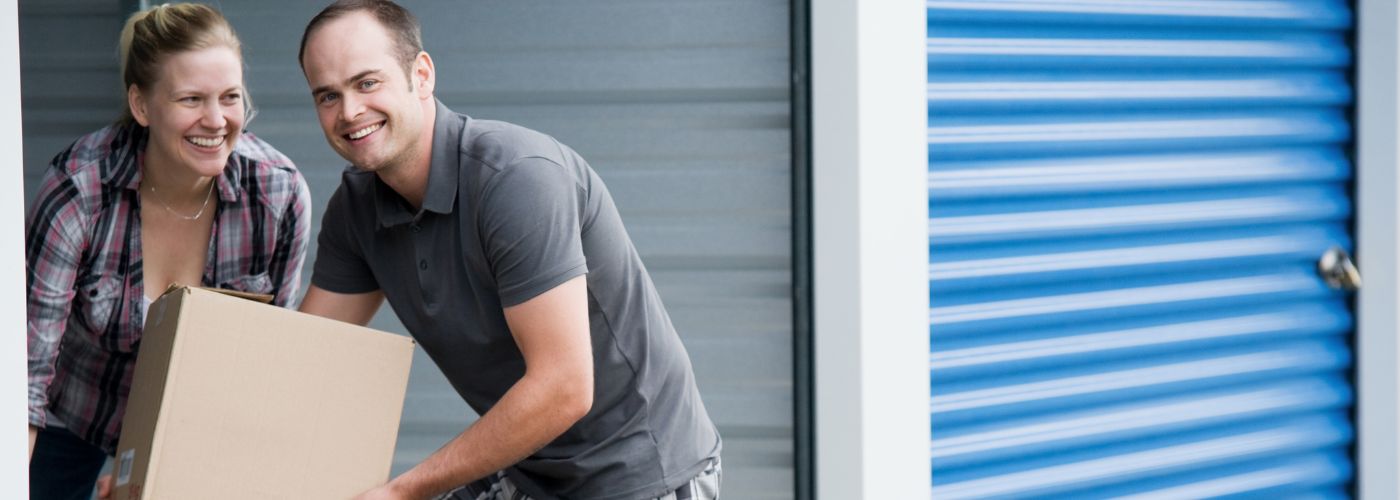Imagine opening the door to your storage unit and being met with a chaotic jumble of boxes, furniture, and assorted items tumbling out in disarray. The thought of navigating through this cluttered mess can be overwhelming, but fear not! Let’s discuss the best methods on how to pack a storage unit.
How To Pack A Storage Unit For Moving
When packing a storage unit for a move, it’s crucial to prioritize organization. Start by creating an inventory of all items being stored and label boxes clearly. Utilize sturdy boxes and containers to maximize space and prevent damage.
Consider stacking lighter items on top of heavier ones to prevent crushing. This is important for anyone using any type of storage services.
Utilizing vertical space is key when packing a storage unit efficiently. Invest in shelving units or stackable bins to make the most of the available space. Don’t forget to leave pathways between boxes for easy access when needed.
Lastly, consider using moving blankets or furniture covers to protect larger items from scratches or dust during the storage period.
Choosing the Right Boxes and Containers for Storage
When it comes to choosing the right boxes and containers for storage, it’s important to consider the specific items you plan to store. For fragile or valuable belongings, opt for sturdy containers made of durable materials like plastic or metal.
Additionally, don’t overlook the importance of proper sizing – choose boxes that are just big enough to fit your items without leaving excess space, to prevent shifting and damage during transport.

Another crucial factor to keep in mind is convenience and accessibility. Consider using clear plastic bins or transparent bags so you can easily see what’s inside without having to rummage through multiple containers. This not only saves time but also helps maintain organization and prevents misplaced items.
Lastly, think about stackability and portability – choose containers that can be easily stacked on top of each other without collapsing, as well as those with handles for easier lifting and carrying from one place to another.
Wrapping and Protecting Fragile Items in Your Storage Unit
When it comes to storing fragile items in your storage unit, proper wrapping and protection is key to ensuring they remain intact. Consider using bubble wrap or packing paper to provide an extra layer of cushioning for delicate items such as glassware or ceramics.
Additionally, investing in sturdy boxes and containers can help prevent damage during transport or while in storage.
For larger fragile items like furniture or electronics, consider using furniture pads or blankets to protect them from scratches or dents. It’s also important to stack fragile items carefully, placing heavier objects at the bottom and lighter ones on top to avoid crushing anything delicate.
By taking these precautions and paying attention to the details, you can ensure that your fragile items remain safe and secure in your storage unit until you need them again.
If worried, then consider buying moving insurance to ensure protection on your personal belongings.
Labeling Your Boxes for Easy Retrieval in the Future
Properly labeling your boxes is essential for easy retrieval in the future. While it may seem like a simple task, taking the time to create clear and detailed labels can save you hours of frustration later on.
Consider using specific keywords or phrases that accurately describe the contents of each box, making it easier to locate items without having to open every single one. Be sure to label each side of the box and on top as well to ensure visibility.
Organizing your boxes by category or room can significantly streamline the retrieval process. This method not only helps you find what you need quickly but also ensures that related items are stored together, reducing clutter and confusion.

Another useful tip is to include a date on each label, indicating when the box was packed. This small detail can help prioritize which boxes to unpack first based on urgency or relevance, making unpacking much more efficient and manageable in the long run.
Maximizing Floor Space in Your Packed Storage Unit
With space coming at a premium in most storage unit plans, it’s crucial to maximize every square inch of your packed storage unit.
One tip is to invest in shelving units that can be mounted on the walls to take advantage of vertical space. Additionally, consider using clear plastic bins for storing items as they allow you to see what’s inside without having to open each container.
Another innovative solution is utilizing over-the-door organizers or hanging shoe racks to store smaller items and free up valuable floor space.
Next, think about implementing a labeling system for your storage bins so you can easily locate items when needed. This not only helps with organization but also saves time and effort searching through boxes.
Consider using furniture that doubles as storage such as ottomans with hidden compartments or bed frames with built-in drawers. By combining these strategies, you can make the most out of your limited floor space in a packed storage unit while maintaining order and accessibility to your belongings.
Securing Furniture and Bulky Items for Safe Storage
Ensuring the safety of your furniture and bulky items during storage is crucial to avoid damage and ensure their longevity.
When storing large items, it’s important to disassemble them whenever possible to save space and reduce the risk of damage during transportation. Utilizing proper packaging materials such as bubble wrap, moving blankets, and sturdy boxes can provide an extra layer of protection.
Additionally, using ratchet straps or bungee cords to secure furniture pieces together can help prevent shifting and potential breakage. For fragile items like glass tables or mirrors, be sure to use corner protectors and packing peanuts to cushion any impact during storage.
By taking these steps to move your furniture properly, you can ensure that your belongings remain safe and intact throughout the storage period.
Maintaining Proper Ventilation and Air Circulation in Your Storage Unit
One often overlooked aspect of storage unit maintenance is proper ventilation and air circulation. Without adequate airflow, your stored items can suffer from mold, mildew, and musty odors.
To prevent this, make sure to leave some space between boxes and avoid packing them too tightly against the walls. Additionally, installing a dehumidifier or using silica gel packets can help absorb excess moisture in the air.
Another important tip is to regularly inspect and clean the vents in your storage unit to ensure they are not blocked by dust or debris. By allowing fresh air to flow through the space, you can maintain a dry and healthy environment for your belongings.
The same can be said about having your belongings in a cooled environment. Heat and sun exposure cancause damage to stored items such as fading colors, warping wood, and melting certain materials.
To protect your belongings from the effects of heat and sun exposure, consider storing them in a climate-controlled storage unit!


